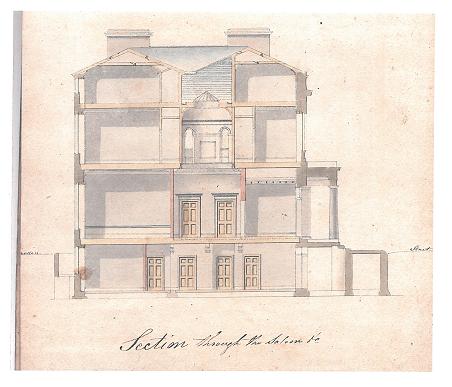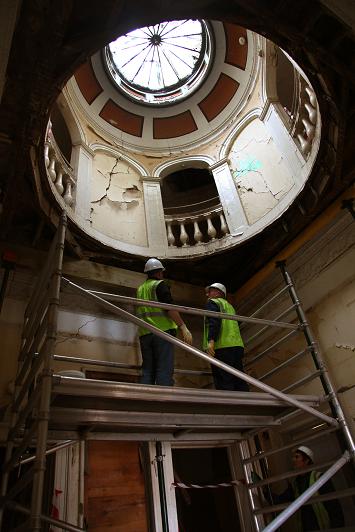Luke Malony


Luke Maloney, architect, stood in for Roger Windsor at short notice to speak to Dumfriesshire and Galloway Natural History and Antiquarian Society on the subject of Peter Pan Moat Brae Trust and Walter Newall.
The streets in the vicinity of Moat Brae were laid out — to a much lesser extent — along the lines of the New Town of Edinburgh: they are George Street, Irving Street, Castle Street, Charlotte Street and Gordon Street. Robert Burn, architect, began the work. The land was feud by John Clerk Maxwell to Robert Threshie of Barnbarroch on the Colvend coast, who already had a town house nearby.
Newall took over the development of Georgian Dumfries from Burn. A vital early task was to secure the land from the Nith by erecting a retaining wall. One of the conditions of the scheme was that a raised street with pavings had to be incorporated.
Newall, a former cabinetmaker, worked for the Water Navigation Company. Dumfries Archive Centre acquired many of Newall's original plans. His portrait remains with the family in Canada.
 Sectional drawing of Moat Brae by Walter Newall 1823 (© D&G Council)
Sectional drawing of Moat Brae by Walter Newall 1823 (© D&G Council)
There had been a castle in that part of town, which was replaced in 1830 by the Assembly Rooms, another Newall building. That castle would have had a moat, hence the origins of the name Moat Brae, the handsome town house designed and built by Walter Newall for Threshie.
In 2009 alarm bells rang when it was discovered that Moat Brae, owned by the Loreburn Housing Association, had been declared unsafe due to vandalism and was within three days of demolition. Devotees of Water Newall's work banded together and managed to buy limited time.
Certainly the devastation within the house was heart-breaking. Everything that could be smashed was smashed. Holes in the roof had allowed water to pour in and had given access to pigeons. Dry rot had laid hold. Yet despite the spoliation, the fine stone staircase, the circular gallery that looked down to the ground floor saloon, the splendid 'cake-icing' plasterwork and the handsome public rooms exuded charm. James Simpson OBE, architect and conservationist, declared that the house could be saved and that it was worth saving, just as Auchinleck House in Ayrshire and Tinwald House locally had been rescued.
 Gallery over the saloon at Moat Brae
Gallery over the saloon at Moat Brae
Now that the house is no longer under threat of demolition, the Peter Pan Moat Brae Trust with a band of volunteers has been busy clearing the house and garden. An even bigger task is the enormity of the funding required to purchase the house from the Loreburn Housing Association (£75,000) and the subsequent costly restoration and establishment of a viable and high-quality international tourist attraction (maybe £4million).
At the heart of the many interesting proposals for the use of the restored house will be a role in keeping with the house's Peter Pan history. J.M. Barrie derived his inspiration for his famous character from his childhood adventures with the Gordon children in the garden at the rear of the house.
Luke gave an excellent PowerPoint presentation that carried his audience through a wide range of emotions: admiration for Newall's architectural accomplishments in the area; the drama of the later-than-eleventh hour rescue; depression and horror at the filth and abuse that mindless vandalism had wreaked on a handsome building; admiration for the many exciting ideas emanating from the talented group leading the cause; and the fervent hope that this much-needed beacon project will succeed in injecting new life into our town. The Moat Brae cause deserves wholehearted support from us all.
